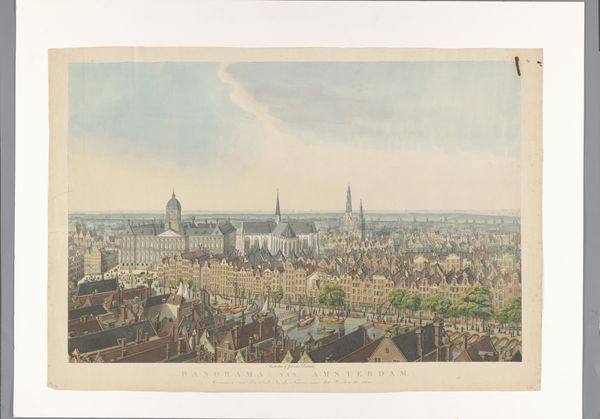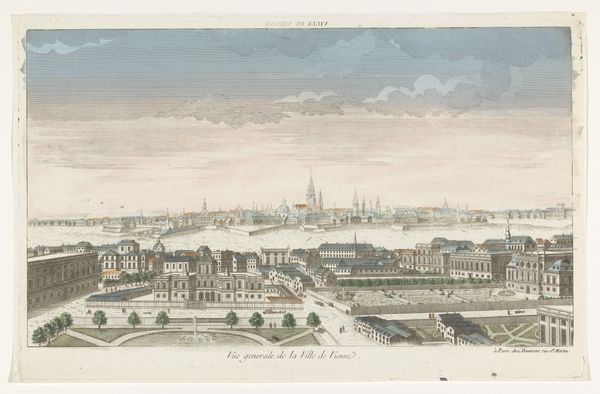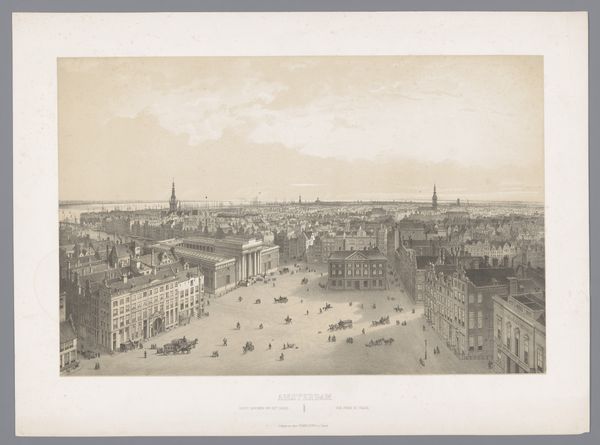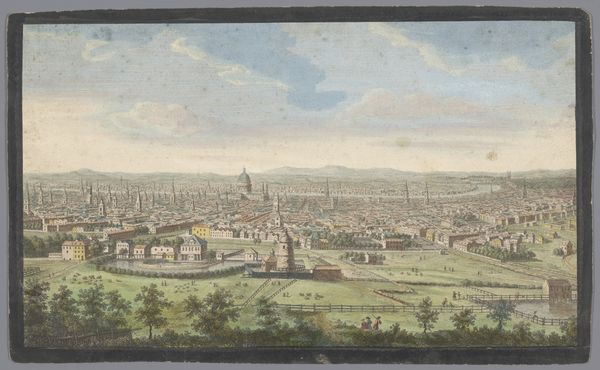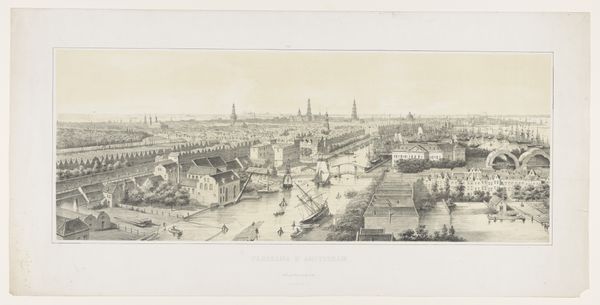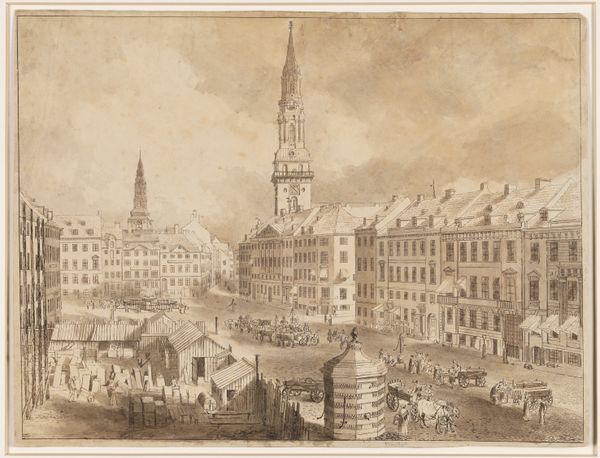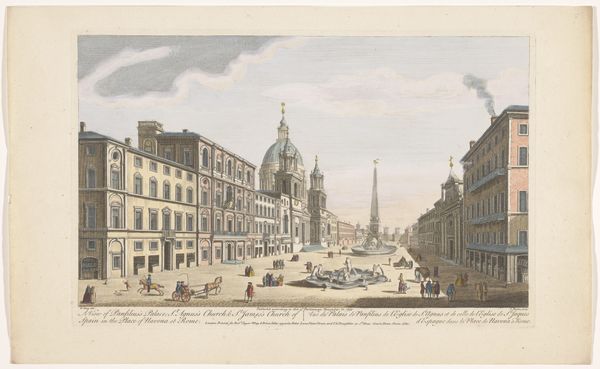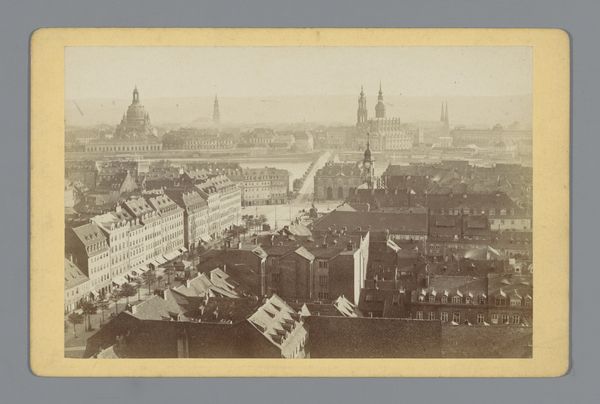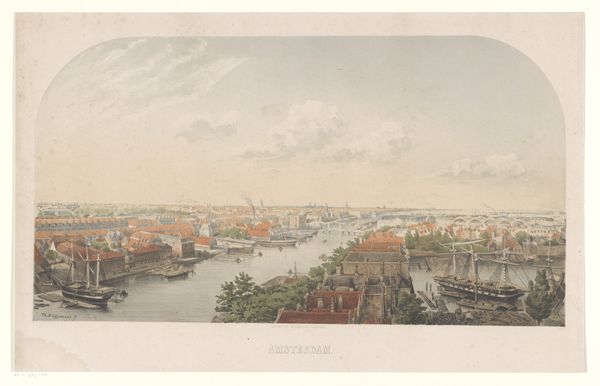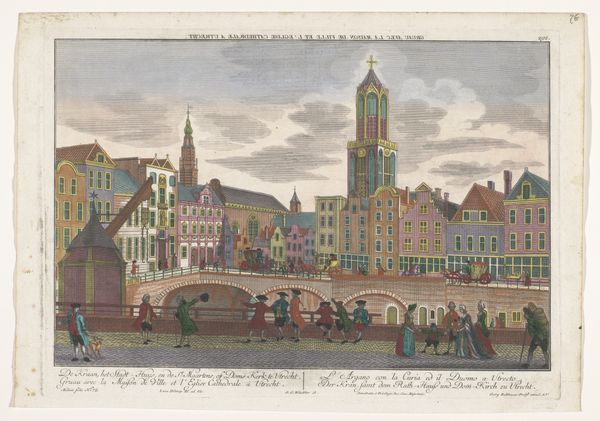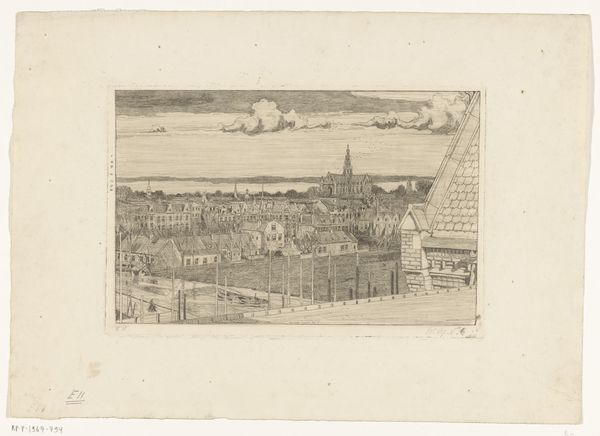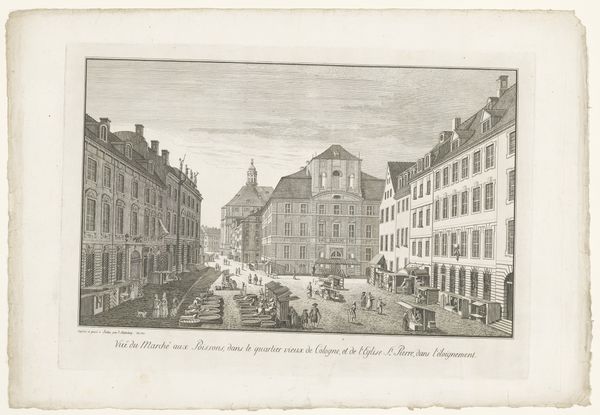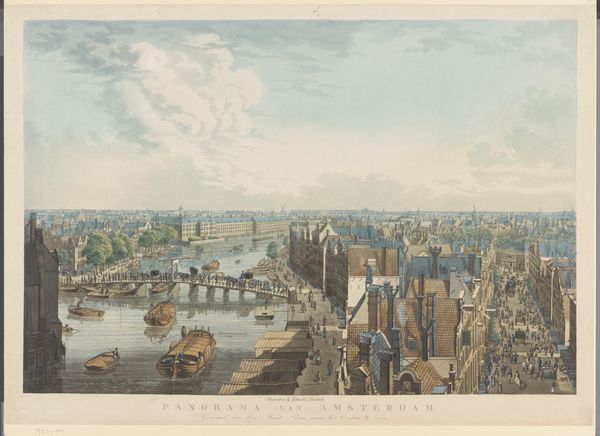
New York from the Steeple of St. Paul's Church, Looking East, South, and West 1849
0:00
0:00
drawing, painting, print, watercolor
#
drawing
#
painting
# print
#
perspective
#
watercolor
#
hudson-river-school
#
cityscape
#
watercolour illustration
#
genre-painting
#
street
#
realism
#
building
Dimensions: image: 21 1/4 x 36 3/16 in. (53.9 x 91.9 cm) sheet: 25 3/16 x 38 7/16 in. (64 x 97.7 cm)
Copyright: Public Domain
Editor: This is "New York from the Steeple of St. Paul's Church, Looking East, South, and West" created by Henry A. Papprill in 1849, utilizing watercolor, drawing, painting, and printmaking techniques. It strikes me as incredibly detailed; almost like a map, yet rendered with artistic flair. How do you see it? Curator: What I see is a meticulous record of the built environment, carefully constructed through the labor of both the artist and the printing process. The multiple mediums at play – watercolor, drawing, painting and printmaking – point to a deliberate approach. Consider the sheer number of individual buildings represented and how this view would have been achieved. The social context, particularly the rise of industry, commerce, and urban expansion is materialized in the detailed architecture. Do you notice how the steeple provides a stable viewpoint from which to survey the rapid transformation of the city? Editor: Yes, the steeple's elevated position definitely emphasizes the city's rapid expansion, making the buildings almost seem like manufactured goods. Do you think the artist intended to highlight industrial advancement? Curator: Not necessarily 'celebrate', but certainly to document it, placing emphasis on the material conditions shaping daily life. Notice how the materials, such as watercolor and print, lend themselves to mass production, allowing wider access to such views, reflecting an increasing commercialization of art itself. The Hudson River School style suggests a romanticizing impulse, yet it’s grounded in depicting actual structures made from brick and mortar. Consider the relationship between nature, implied at the borders of the image, and this human constructed environment. How did the methods used to produce the artwork shape its meaning for a 19th-century viewer? Editor: That's an insightful way to see it. I initially focused on the artistic style, but understanding the social context, the medium’s influence, and its relation to labor helps paint a more complete picture. Curator: Indeed, focusing on materials and means of production can open up new layers of meaning within the work, making connections beyond what the aesthetic alone provides.
Comments
No comments
Be the first to comment and join the conversation on the ultimate creative platform.
